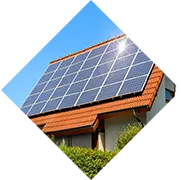Understanding the Typical Dimensions of Solar Panels for Effective Energy Production and Installation
Understanding the Average Size of Solar Panels
Solar panels are an essential component in the renewable energy landscape, providing a sustainable alternative to fossil fuels. As more homeowners and businesses invest in solar energy to reduce electricity costs and carbon footprints, understanding the average size of solar panels becomes important for anyone considering this technology.
The size of a solar panel is primarily dependent on its efficiency, type, and the amount of power it can generate. Generally, the average residential solar panel measures about 65 inches by 39 inches, which equates to around 17.6 square feet. Most commonly, these panels are either monocrystalline or polycrystalline, each type offering distinct advantages and having variations in their dimensions.
Understanding the Average Size of Solar Panels
The number of solar panels needed for a solar installation significantly relies on the total energy consumption of a household and the panel's efficiency. On average, a home may require anywhere from 20 to 30 panels to meet its energy needs, but this can vary widely based on factors such as location, roof size, and individual energy consumption patterns. For instance, a larger home in a sunny area may need fewer panels than a smaller home in a less sunny region to achieve the same energy output.
solar panel average size

Another critical aspect to consider is the inclination and orientation of the solar panels. The efficiency of solar panels is maximized when they are tilted at an optimal angle facing the sun. This arrangement is crucial to ensure maximum sunlight is absorbed throughout the day, which ultimately influences the amount of energy generated.
In addition to the physical dimensions of solar panels, potential buyers should also consider the installation area required, which includes space for the solar inverter and any necessary hardware. Installation typically calls for a clear, unobstructed area to ensure efficiency and safety. Thus, assessing the roof space, potential obstructions such as trees or nearby buildings, and the orientation can significantly influence how many solar panels can be installed.
Lastly, it's important to mention that while the average size of solar panels has remained relatively consistent, innovations in solar technology continue to evolve. Manufacturers are constantly working on developing more efficient panels that can produce more electricity in the same amount of space. For instance, bifacial panels, which capture sunlight on both sides, are becoming increasingly popular and may offer an efficient alternative for those looking to maximize energy generation.
In conclusion, understanding the average size of solar panels is crucial for anyone considering investing in solar energy. With an average panel size of around 17.6 square feet and varying power outputs based on efficiency, potential users must assess their energy needs, roof space, and location. As technology advances, solar panels will likely become even more efficient, making solar energy an increasingly viable option for sustainable living. With careful planning and consideration of specific requirements, solar energy can be a practical step towards a greener future.
-
String Solar Inverter: The High-Efficiency Solution for Smart Solar EnergyNewsJul.14,2025
-
Revolutionizing Rooftop Energy with the Power of the Micro Solar InverterNewsJul.14,2025
-
Power Independence with Smart Off Grid Solar Inverter SolutionsNewsJul.14,2025
-
On Grid Solar Inverter: Powering the Future with Smart Grid IntegrationNewsJul.14,2025
-
Monocrystalline Solar Panels: High-Efficiency Power for the Future of Clean EnergyNewsJul.14,2025
-
Bifacial Solar Panel: A Smarter Investment for Next-Generation Energy SystemsNewsJul.14,2025







